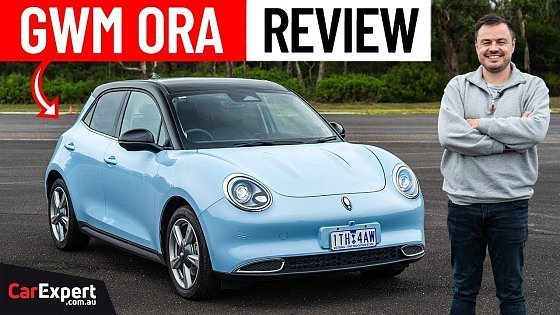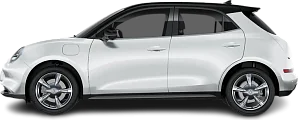Video Summary
The Ora Funky Cat's rear design is reminiscent of the Fiat 500, but it is generally a cute and good-looking car.The profile is similar to the original Nissan Leaf but better looking. It comes with 18-inch wheels standard.
The available two-tone paint scheme is reminiscent of the Mini.
The front headlights are somewhat Mini-like, also a bit Beetle-like and even a touch Porsche 911-like. The little ridges in the bonnet are a nice touch.
The inside of the Ora Funky Cat is very funky. There are two two-tone interior choices in addition to a gray interior option.
The dash is squishy, and leatherette is on the dash and door panels. The quilted material is soft. Overall, its interior feels much nicer than a Volkswagen ID.3.
The infotainment system is easier to use than that of the ID.3.
Most climate controls are operated through the infotainment screen, but there is a shortcut button down below for the air conditioning, front defog, and rear defog.
Toggle switches are similar to the Mini.
It's a shame that sat nav isn't available in the driver's display.
There is no Apple CarPlay or Android Auto at launch, but it will be updated over the air at a later date.
There are some scratchy plastics lower down.
There is a storage area under the armrest and a wireless charging phone tray.
The steering wheel is adjustable for reach and height, and the seats are electrically adjustable as standard.
It is equipped with lots and lots of kit with no options offered.
The door bins are decent in size.
The glove box is slow to open and damped.
The "First Edition" badges stuck onto the trim seem out of place.
The back of the car feels as plush as the front with quilted seats. The door tops don't feel as soft and nice as in the front. It can be a little cramped for adults in the back and is best with only two passengers.
The boot is the weak point, with only 228 liters of cargo space, which is similar to the Mini Electric.
There is an awkward lip to lift heavy items over.
There isn't any storage space beneath the cargo floor.
Also, the car lacks a front trunk.
The rear seats fold down to accommodate more cargo, and Isofix anchor covers are difficult to use.
The car comes with a 48-kilowatt-hour battery pack, which can be charged with DC at up to 64 kilowatts or AC up to 11 kilowatts. The range is 193 miles. If mainly motorway driven, then closer to 133 miles will be expected.
It has 171 horsepower.
Automatic cruise control, radar detection, and lane-keeping assist come as standard.
Other safety systems help to avoid hitting things like cyclists and joggers.
The braking in the normal regeneration modes isn't natural feeling.
It is equipped with a face recognition camera on the windscreen pillar which will recognize the driver's face and change the car's settings to their liking.
The digital voice assistant works very well. The car will also use over-the-air updates for its infotainment.
The turning circle, at 11.2 meters, isn't great. That's just over 10 meters, but a Volkswagen ID.3 has one of 10.2.
Overall, the car drives pretty well, if adequate. It has a lot of roll in the bends and the suspension is rough and hard. You can lose grip coming out of a bend and there is numbness in the steering.
The reviewer ultimately advises considering rather than shortlisting it because it has a decent electric powertrain, but it has a small trunk.







